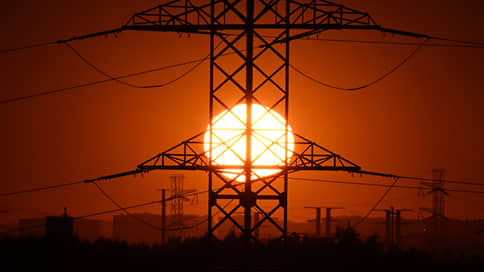Electricity supplies to China halve due to frost and accidents
[ad_1]

Russia sharply reduced electricity supplies to China due to accidents at Far Eastern thermal power plants and growing domestic demand: according to Kommersant’s estimates, in the summer exports fell by half, and in the fall the reduction reached 70% year on year. As a result, from January to November, electricity supplies to China decreased by almost 27%, to 3.16 billion kWh, according to Chinese customs statistics. The Ministry of Energy of the Russian Federation hopes that next year exports from the Russian Federation to China will be restored to previous volumes.
Russia exported approximately 3.16 billion kWh to China in January-November, which is 26.6% less than the same period in 2022, according to recent Chinese customs statistics. The most noticeable decrease in electricity supplies to China has occurred since the end of summer. In August, exports decreased by 49.8% year-on-year, in September – by 47%, in October – by 72%, and in November – by 61%. Reasons: high accident rate of thermal power plants in the Far East against the backdrop of growing domestic demand, first due to abnormal heat, and now due to frost. The situation has worsened due to the low water availability of hydroelectric power stations in the region.
Electricity supplies to China are carried out by Inter RAO from the Far East along three lines – 500 kV, 110 kV and 220 kV – under a take-or-pay contract valid until 2036. Energy from the Eastern power grid flows into Heilongjiang. The supply price is based on the cost of energy production at coal-fired thermal power plants in a Chinese province. Export payments are made in yuan. Moreover, now the cost of delivery from the Russian Federation includes a new export duty (4–7% at an exchange rate of 80–95 rubles per dollar). Judging by Chinese statistics, the total cost of electricity for January-November amounted to $138.25 million, or ¥970.42 million. A noticeable increase in the average supply price occurred in November: the price per 1 kWh in both currencies increased by 3.8% in compared to the previous month ($0.046).
For many years, the volume was about 3 billion kWh per year, and a sharp increase in exports began in 2021 at the request of China. In 2020, the supply volume was approximately 3.2 billion kWh, in 2021 – 3.97 billion kWh, and in 2022 – a record 4.7 billion kWh. Inter RAO has not published electricity export figures since 2022. The company did not respond to Kommersant’s request. According to Kommersant’s estimates, if the current volume of supplies is maintained, the final volume for the year could be about 3.3 billion kWh. According to one of Kommersant’s sources, currently exports to China do not exceed 113 MW.
The Russian Ministry of Energy hopes that in 2024 the volume of exports to China will increase again. “The volume of electricity exports to China has fallen, this is due to the unsatisfactory energy balance in the East,” said Energy Minister Nikolai Shulginov in an interview with the Rossiya 24 TV channel. “Next year, I think, we will restore the energy balance, and if there is another average year, I I think we will restore supplies to China.” The approved scheme and program for the development of Russian energy systems (S&P) notes that from 2024, exports to China could reach 4.5 billion kWh.
In general, the export of electricity from the Russian Federation to other countries by the end of 2023 may decrease to 10 billion kWh, Nikolai Shulginov noted. Last year the figure was 13.5 kWh, since at the beginning of the year there were still supplies to the EU countries, and there were also large volumes of exports to China. At the same time, Russia has increased supplies to Kazakhstan this year, the minister noted. According to the CIP, in 2024–2029, the annual export volume may be approximately 10.55 billion kWh.
After the loss of European markets, China has become the largest energy export destination for the Russian Federation with a share of about 35% of total sales. Kazakhstan is in second place in terms of projected supply volumes (3.15 billion kWh), Georgia is in third (1.7 billion kWh), as follows from the C&D. In addition, supplies to Mongolia are planned at the level of 700 million kWh and to Azerbaijan – at the level of 300 million kWh. A promising market for Inter RAO is Türkiye in transit through Georgia. However, exports to the south are also limited due to a shortage of free energy capacity in the south of the country after the inclusion of new regions (see Kommersant on September 28).
[ad_2]
Source link





